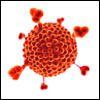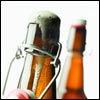|
|
|
28 May 2015 |
|
|

Photo Credit: UDE_Frank Preuβ |
LCGC TV: Principles of In-Tube Extraction for Headspace Sampling of Beer
Torsten C. Schmidt from the University Duisburg-Essen in Germany recently developed an in-tube extraction (ITEX) method for headspace sampling of beer prior to gas chromatography–mass spectrometry (GC–MS). In this video he discusses the principles of the technique and its advantages over other methods. |
|
| eSeminar Series: Advance The LC Characterization of Biotherapeutics |
AdvanceBio products are designed to deliver consistent, exceptional performance for the complete characterization of proteins, antibodies, conjugates, new biological entities and biopharmaceuticals. Presented by industry experts this ongoing monthly series of eSeminars will cover the latest UHPLC techniques for the advanced characterization of therapeutic biomolecules using state-of-the art technologies.
 Learn more Learn more |
|
|
|
| Micro-SPE Desalting With Reduced Losses |
New! Micro-volume TARGA® C18 SPE chemistries to desalt peptide, glycopeptide or glycan samples. Desalting with the water wettable, TARGA® C18 UltraMicroSpin™ columns, by loading in 100% water, improves recovery of these polar molecules prior to LCMS.
 Try our TARGA C18 as your desalting protocol, today! The Nest Group, Inc. - "Not Just Columns ... Answers!" Try our TARGA C18 as your desalting protocol, today! The Nest Group, Inc. - "Not Just Columns ... Answers!" |
|
|

Photo Credit: Science Photo Library - PASIEKA/Getty Images |
Q&A: Novel Strategies for Biopharmaceutical Purification
José Paulo Mota from the Faculty of Science and Engineering (FCT-UNL) of Universidade Nova de Lisboa and the Institute of Experimental and Technological Biology (IBET), Portugal, has been working on the development of chromatographic techniques to speed up the purification of biopharmaceuticals, specifically adenoviruses. |
|

Photo Credit: Foodcollection RF/Getty Images |
News: Analyzing Shipwrecked Beer from 1840s Using GC–MS
Beer from a 1840s shipwreck in the Baltic Sea has been analyzed by a team of scientists at the VTT Technical Research Centre in Finland. Using a variety of chromatography techniques — including gas chromatography coupled to mass spectrometry (GC–MS) and high-performance anion-exchange chromatography (HPAEC) coupled to MS — the team compared the beer with modern-day varieties and found they were not too dissimilar. |
|
| Online Sample Cleanup: A Cost-Effective Alternative to Conventional SPE and Liquid-Liquid Extraction Methods |
This web seminar presents an online sample cleanup methodology demonstrated using analysis of testosterone in plasma and cortisol in urine in a research setting. It is now available on-demand for you to view at your convenience, along with a complimentary whitepaper.
 Register for the On-Demand Webcast Register for the On-Demand Webcast
 Download Printable Whitepaper Download Printable Whitepaper
|
|
|
|
|
|
Upcoming Webcasts
Editors’ Series: Hi-tech, Low-tech and No-tech: Preparing Samples for LC and LC–MS of Small Molecule Drugs and Pesticides
Thursday, May 28, 2015
10 am PDT/ 12 pm CDT/ 1 pm EDT
Sign Up Now >>
Pesticide Residue Analysis: Tips and Tricks for the Whole Workflow: Maximizing Analysis Efficiency through New GC–MS Approaches
Wednesday, June 17, 2015
8:00 am PDT/ 11:00 am EDT/ 4:00 pm BST/ 5:00 pm CEST
Sign Up Now >>
A Faster, More Sensitive Sample Preparation Solution for Bioanalytical Samples
Tuesday, June 23, 2015
8:00 am PDT/ 10:00 am CDT/ 11:00 am EDT
Sign Up Now >>
|
|
|
 |
|
|
|